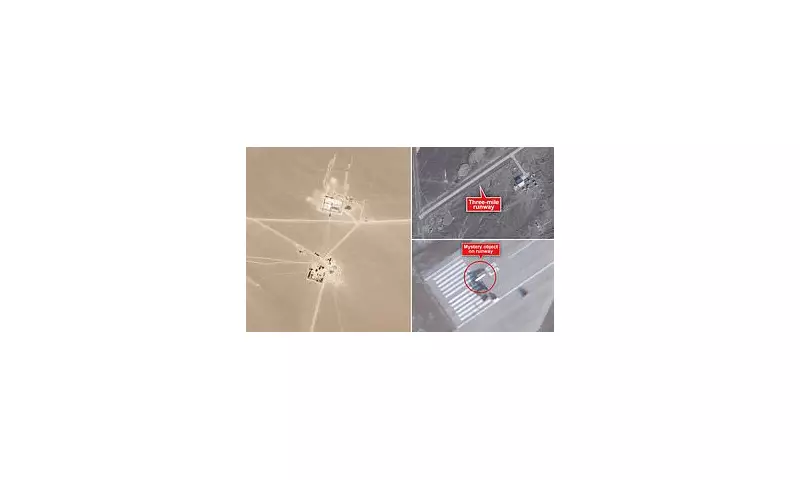
Deep within China's remote western deserts, hidden behind restricted airspace and far from any civilian settlement, lies a top-secret military facility that has become the epicentre of Beijing's most ambitious defence projects. The Lop Nur testing ground, once known for Cold War nuclear experiments, has transformed into a sprawling complex that analysts compare to America's legendary Area 51.
The Desert Fortress: Runways and Mysterious Objects
Satellite imagery has revealed the astonishing scale of development at this former salt lake. A colossal runway stretching over three miles dominates the landscape, ranking among the longest airstrips globally. The runway stood largely empty until November last year, when Planet Labs captured images showing a mysterious white object approximately 32 feet in length positioned at its eastern end.
Analysts immediately drew comparisons to the United States' X-37B robotic space shuttle, suggesting China might be testing similar reusable spacecraft technology. The object's appearance coincided with significant expansion of the complex, including new hangars and support vehicles visible in imagery later shared by The War Zone.
Next-Generation Stealth Aircraft Emerge
By late summer 2025, satellite images revealed two radically designed stealth jets occupying the massive runway. Neither aircraft matched known Chinese fighter types, featuring smooth, angular designs without visible tails to minimise radar detection.
The larger aircraft, identified by analysts as the J-36, measures approximately 65 feet across its diamond-shaped wings and 62 feet in length. This tailless, three-engine aircraft represents what experts believe is China's sixth-generation multirole fighter, capable of air superiority, deep strike missions, and commanding 'loyal wingman' drones in combat.
An aviation expert explained the design philosophy: "By taking the tail away, you create a smooth aircraft where radar signals scatter rather than returning to the receiver."
Alongside the J-36 sits the smaller J-XDS or J-50, a twin-engine, single-seat stealth jet built for high-altitude operations and rapid missile launches. Analysts suggest both aircraft are designed to operate together, penetrating heavily defended airspace at high speeds and attacking with minimal warning time for defenders.
Nuclear Ambitions and Underground Testing
Lop Nur's secrets extend beyond aircraft to concerning nuclear developments. Between 2020 and 2024, analysts identified new boreholes, access roads and buildings at sites historically associated with China's nuclear programme. The construction of horizontal tunnels into hillsides suggests preparations for underground nuclear tests that could avoid seismic detection.
This activity coincides with China's unprecedented nuclear expansion. According to the Stockholm International Peace Research Institute, China's nuclear arsenal grew from around 500 warheads in early 2024 to approximately 600 currently. The Pentagon warns China is building more than 350 new silos for intercontinental ballistic missiles, with projections suggesting its nuclear stockpile could reach 1,000 warheads by 2030.
A defence official, speaking anonymously, revealed: "They also are showing some interest in developing a new conventional ICBM that could strike Hawaii, Alaska and the continental United States."
Space Warfare and Global Implications
Beijing's military ambitions extend into space, where China has dramatically accelerated its warfare capabilities. In 2021, China tested a nuclear-capable hypersonic glide vehicle that circumnavigated the globe before striking its target, stunning US defence officials.
China has also developed sophisticated anti-satellite weapons and the Shijian satellite series equipped with robotic arms capable of grabbing and moving other satellites. While China claims these technologies serve peaceful purposes like debris removal, analysts warn they possess clear offensive potential against enemy communications and early warning networks.
The developments at Lop Nur occur against a backdrop of growing international concern. Admiral Sir Tony Radakin, the United Kingdom's Chief of the Defence Staff, warned in late 2024 that the world was entering "a third nuclear age" driven by rapid military expansion in China, Russia, Iran and North Korea.
In the United States, Secretary of State Marco Rubio acknowledged: "The Chinese are undertaking the most rapid military buildup in human history. A part of that is their expansion of their nuclear capability."
The strategic importance of these developments cannot be overstated, particularly regarding Taiwan. US intelligence assesses that Chinese President Xi Jinping has instructed his military to be capable of taking the island by 2027, though Beijing has never publicly confirmed this timeline. The advanced weapons systems emerging from Lop Nur could play decisive roles in any potential conflict.
As Western defence chiefs monitor these developments through satellite imagery and intelligence gathering, the fundamental question remains: how long will it take for the weapons being perfected in China's remote desert to emerge from their secret testing ground and alter global military balances?





